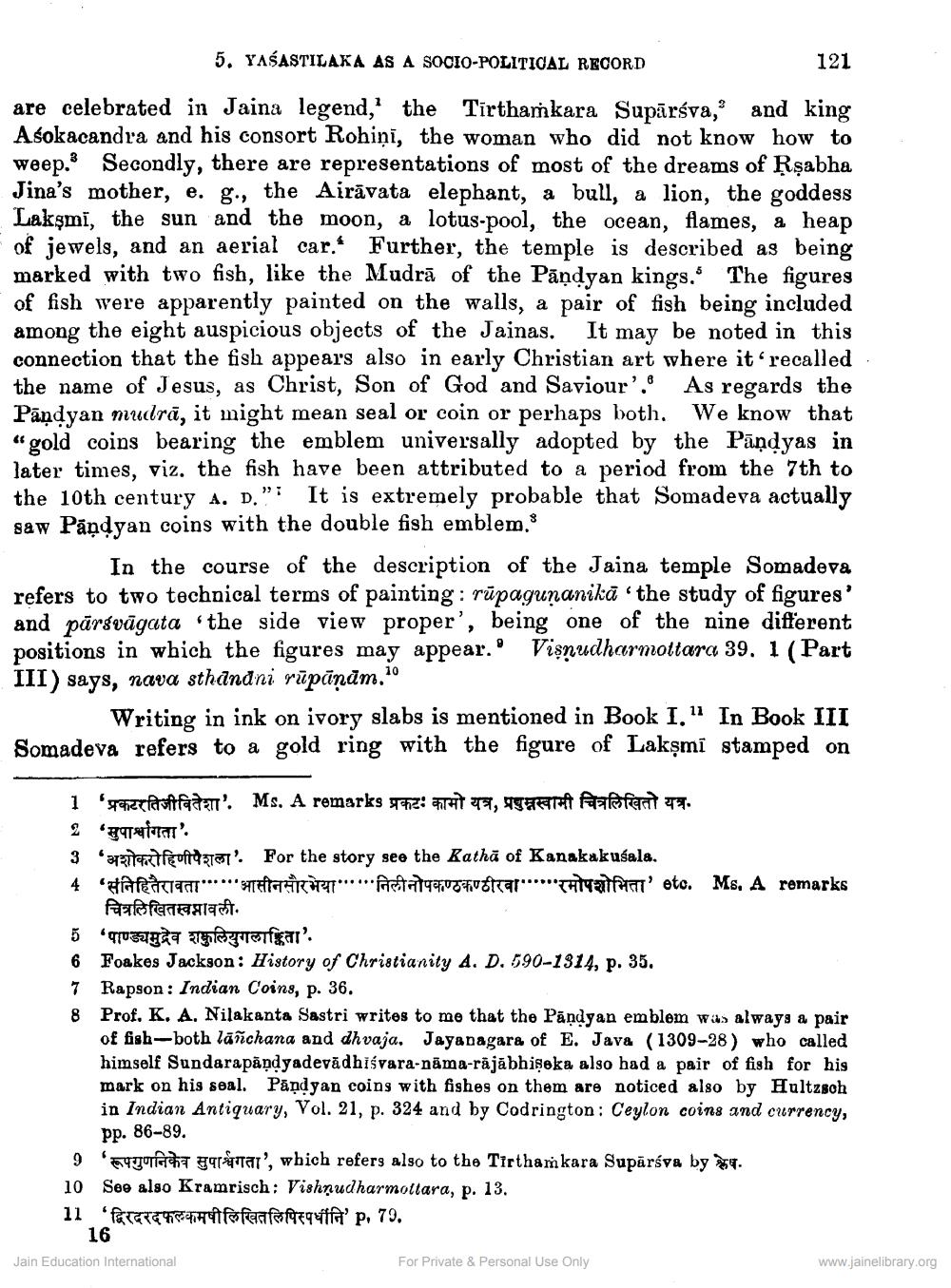________________
5. YASASTILAKA AS A SOCIO-POLITICAL RECORD
121
are celebrated in Jaina legend, the Tirthamkara Supārsva, and king A sokacandra and his consort Rohiņi, the woman who did not know how to weep. Secondly, there are representations of most of the dreams of Rşabha Jina's mother, e. g., the Airāvata elephant, a bull, a lion, the goddess Laksmi, the sun and the moon, a lotus-pool, the ocean, flames, a heap of jewels, and an aerial car. Further, the temple is described as being marked with two fish, like the Mudrā of the Pāņdyan kings. The figures of fish were apparently painted on the walls, a pair of fish being included among the eight auspicious objects of the Jainas. It may be noted in this connection that the fish appears also in early Christian art where it recalled the name of Jesus, as Christ, Son of God and Saviour'. As regards the Pandyan mudrā, it might mean seal or coin or perhaps both. We know that “gold coins bearing the emblem universally adopted by the Pāņdyas in later times, viz. the fish have been attributed to a period from the 7th to the 10th century A. D.” It is extremely probable that Somadeva actually saw Pāndyan coins with the double fish emblem.
In the course of the description of the Jaina temple Somadeva refers to two technical terms of painting: rūpagunanikā 'the study of figures' and pārsvāgata the side view proper', being one of the nine different positions in which the figures may appear.. Visnudharmottara 39. 1 (Part III) says, nava sthandni rūpāņām.
Writing in ink on ivory slabs is mentioned in Book I." In Book III Somadeva refers to a gold ring with the figure of Lakşmi stamped on
1 stor faraftfadan'. Ms. A remarks This!
H
e r fazlafen . 2 'gefia': 3 ariaticoftol!. For the story see the Rathā of Kanakakusala. 4
TOT...SEARCH ... 99,08 ftratt yal ' eto. Ms. A remarks चित्रलिखितस्वप्नावली. 5 qrugagaa gasteifgar'. 6 Foakes Jackson: History of Christianity A. D. 590-1314, p. 35. 7 Rapson: Indian Coins, p. 36. 8 Prof. K. A. Nilakanta Sastri writes to me that the Pandyan emblem was always a pair
of fish-both lañchana and dhvaja. Jayanagara of E. Java (1309-28 ) who called himself Sundarapāņdyadevădhiśvara-nama-rājābhişoka also had a pair of fish for his mark on his seal. Pandyan coins with fishes on them are noticed also by Hultzsch in Indian Antiquary, Vol. 21, p. 324 and by Codrington: Ceylon coins and currency,
pp. 86-89. 9 UUTART garrai', which refers also to the Tirthamkara Supārsva by *** 10 See also Kramrisch: Vishnudharmoltara, p. 13. 11 'Para f feaffequitfa' p. 79.
16 Jain Education International For Private & Personal Use Only
www.jainelibrary.org




